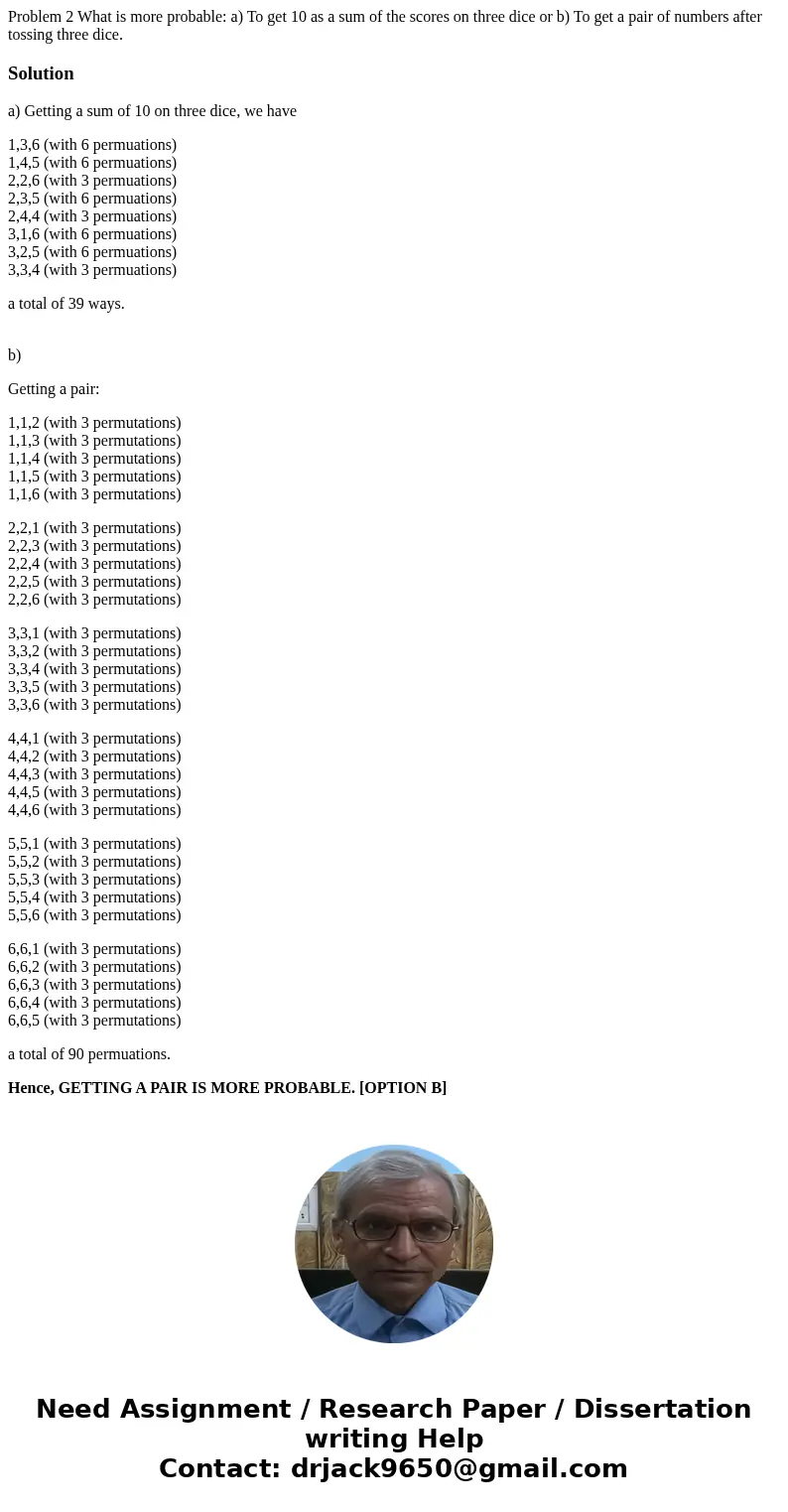Problem 2 What is more probable a To get 10 as a sum of the
Solution
a) Getting a sum of 10 on three dice, we have
1,3,6 (with 6 permuations)
1,4,5 (with 6 permuations)
2,2,6 (with 3 permuations)
2,3,5 (with 6 permuations)
2,4,4 (with 3 permuations)
3,1,6 (with 6 permuations)
3,2,5 (with 6 permuations)
3,3,4 (with 3 permuations)
a total of 39 ways.
b)
Getting a pair:
1,1,2 (with 3 permutations)
1,1,3 (with 3 permutations)
1,1,4 (with 3 permutations)
1,1,5 (with 3 permutations)
1,1,6 (with 3 permutations)
2,2,1 (with 3 permutations)
2,2,3 (with 3 permutations)
2,2,4 (with 3 permutations)
2,2,5 (with 3 permutations)
2,2,6 (with 3 permutations)
3,3,1 (with 3 permutations)
3,3,2 (with 3 permutations)
3,3,4 (with 3 permutations)
3,3,5 (with 3 permutations)
3,3,6 (with 3 permutations)
4,4,1 (with 3 permutations)
4,4,2 (with 3 permutations)
4,4,3 (with 3 permutations)
4,4,5 (with 3 permutations)
4,4,6 (with 3 permutations)
5,5,1 (with 3 permutations)
5,5,2 (with 3 permutations)
5,5,3 (with 3 permutations)
5,5,4 (with 3 permutations)
5,5,6 (with 3 permutations)
6,6,1 (with 3 permutations)
6,6,2 (with 3 permutations)
6,6,3 (with 3 permutations)
6,6,4 (with 3 permutations)
6,6,5 (with 3 permutations)
a total of 90 permuations.
Hence, GETTING A PAIR IS MORE PROBABLE. [OPTION B]

 Homework Sourse
Homework Sourse